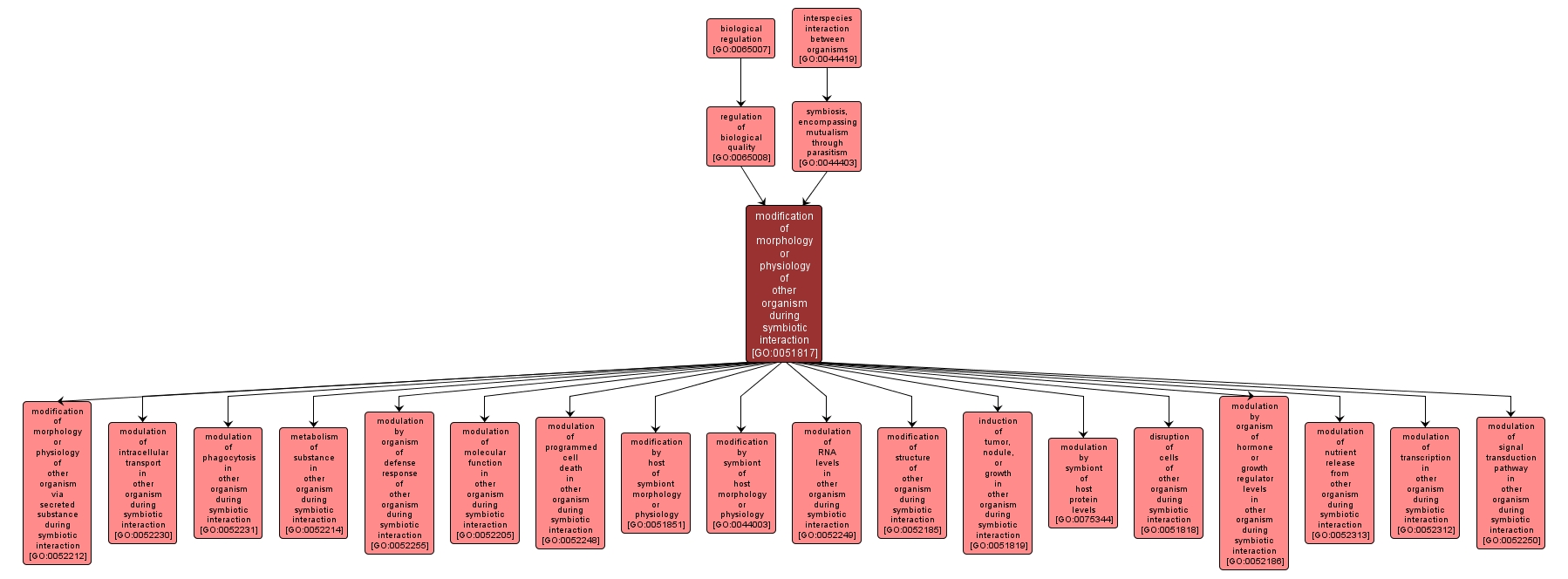GO TERM SUMMARY
|
| Name: |
modification of morphology or physiology of other organism during symbiotic interaction |
| Acc: |
GO:0051817 |
| Aspect: |
Biological Process |
| Desc: |
The process by which an organism effects a change in the structure or processes of a second organism, where the two organisms are in a symbiotic interaction. |
Synonyms:
- regulation of physiological process in other organism
- modulation of morphology or physiology of other organism during symbiotic interaction
- regulation of physiology of other organism
- regulation of morphology of other organism
- regulation of morphology or physiology of other organism during symbiotic interaction
|














